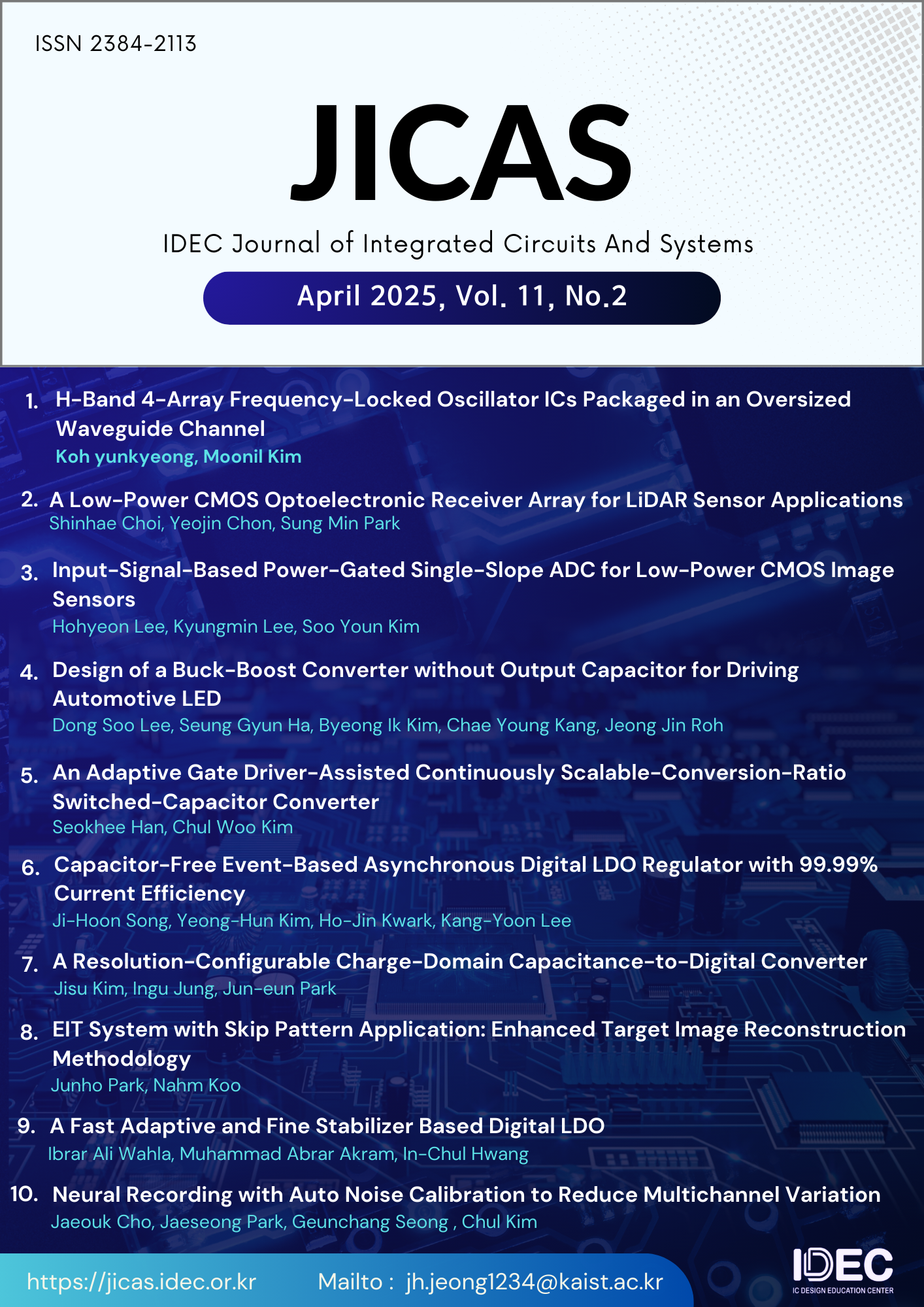Design of a Buck-Boost Converter without Output Capacitor for Driving Automotive LED
Abstract
LEDs are widely used in automotive lighting systems due to their long lifespan, low power consumption, and fast response characteristics. Consequently, significant research has been conducted on LED drivers. Automotive LED drivers must rapidly adjust their output voltage to accommodate the wide input voltage range of vehicle batteries (7-60V) and the operating conditions of LED matrices. While buck-boost converters are commonly used for this purpose, conventional converters face the risk of LED damage caused by input voltage fluctuations and LED switching, primarily due to the presence of an output capacitor. To overcome this limitation, this study designs a buck-boost converter without an output capacitor. The designed buck-boost converter utilizes a flying capacitor structure, ensuring that LED current is always supplied through the inductor. Additionally, by adopting LED current-based feedback, both the current regulator and reference voltage controller are eliminated. The designed converter maintains a stable output voltage and LED current across an input voltage range of 7-60V. The chip was fabricated using TSMC’s 180nm BCD process.

